The example below shows the individual violet, green and red images from a sequence taken during Galileo's first flyby of Earth in December, 1990. Click on any of the pictures to retrieve a full size image.
We can put these three images together to make a color picture. We'll use the red filter image for red, the green image for green light and the violet image for blue. If we give them all the same brightness and contrast, the result looks like this:
Surprised? Because they're so much brighter than water or land, about all you can see are clouds and ice! We can brighten up the picture without altering the color balence:
However, the previous version is closer to what you'd actually see if you were a passenger on board Galileo!
Okay, I understand what true color is about. Let's see the moons of Jupiter!
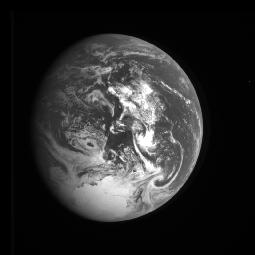 Violet
Violet 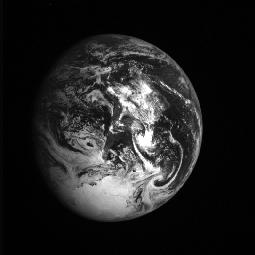 Green
Green 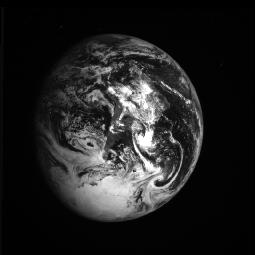 Red
Red 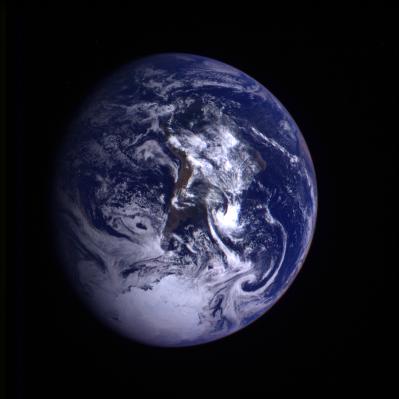 "True Color"
"True Color" 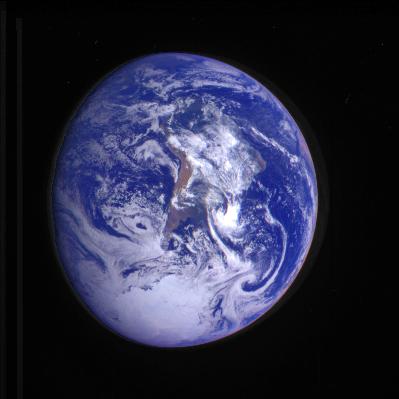 "Brightened True Color"
"Brightened True Color"